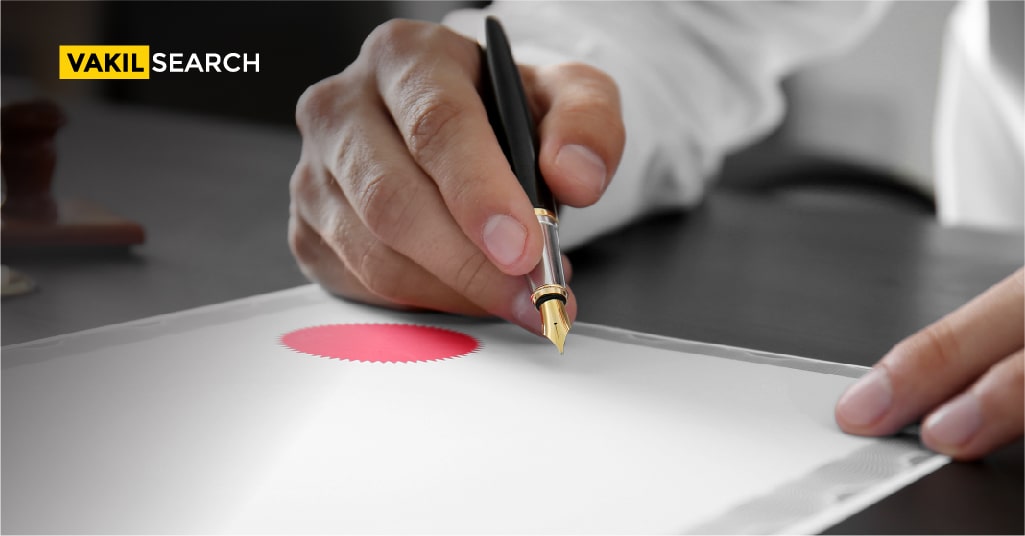When we talk about copyright protection laws in our country, they are quite undefined. There are a lot of vacuums in the Copyright Protection Act, 1950. Let's see what is trademark clearance certification for copyrights
Firstly, they say that registration is not mandatory, but again they say that if you need legal protection in case of infringement, the registration certificate will be concrete proof. There is yet another provision in the Act, which is peculiar and is the only provision that establishes the link between Trademark and artistic work copyright. Section 45 of the Act states that, in the case of artistic works, to obtain a copyright, the owner of the work has to submit a Trademark Clearance Certificate along with the other documents.
Before we get into the procedure for obtaining a Trademark Clearance Certificate, let’s get our basics right on “artistic work.”
Artistic Works as defined under Section 2(c) of the Act gives a list of copyrightable works:
- Sculpture
- Drawings – diagrams, maps, charts, or plans
- Engraved art
- Photography
- Artistic craftsmanship
- Architecture work
Now, the term ‘artistic works’ includes both 2-dimensional work and 3-dimensional work. But, if the particular work is for any commercial purpose in relation to goods or services, then in such cases, the Act mandates obtaining a trademark clearance certificate or search certificate from the trademark registration office. This is under Section 45 of the Act.
What Is a Search Certificate or TM-C?
Trademark clearance certificates are as search certificates are the certificates issued by the trademark registrar stating that the proposed artistic work is not deceptively similar or identical to the trademarks registered under the Act. It is also to check that no such applications are for the particular artistic work by anyone else.
Now, the immediate question which will strike you is ‘why is there such a requirement for artistic work and not for other copyrightable works?’
The answer is quite simple
Entrepreneurs continuously strive to promote their brands and incorporate their brand logos in all their works. The logo design is a classic example of artistic work. So, in such cases, the particular logo can get protection under two IPR regimes: trademark and copyrights.
The main aim of a trademark is to make sure there no confusion arises in the minds of consumers of the two goods and will protect the logo only in cases or interstate commerce based on the classification of the goods and services, but copyrights will protect the artistic design logo from being copied or used without consent regardless of whether it is being used to brand goods and services.
Therefore, copyrights will provide broader protections to the artistic work that provides such works that are original in nature and not available in the public domain.
Navigate the trademark landscape with ease using Vakilsearch’s intuitive trademark search tool, equipped with advanced filters for precise results.
Coming back to answering our question, why only artistic work? Because the rest of the copyrightable works do not have any connection with trademarks. Literary work or dramatic work or cinematography work do not have an element of trademark requirements.
Generally, logos and designs are for brand identities for representing businesses that protect as trademarks. As they are original artworks that have an element of creativity, they are also protected as copyrights. Only certain kinds of creative works are capable of Copyright protection, artistic works (including brand logos or designs) being one such kind. If a brand logo has an element of creativity and is original, it will also attract copyright protection in addition to trademark protection.
Design Registration Vs Artistic Work
A famous painting will continue to enjoy the protection available to an artistic work under the Copyright Act Literary Work. A design from such a painting for the purpose of industrial application on an article may also entitle design protection in terms of the provisions of the Designs Act.
The judgment of a division bench of Delhi High Court in Microfibres Inc v Girdhar & Co & Anr (2009) provided much-needed clarity with respect to the conflict between original artistic work as defined under the Copyright Act and design as defined in the Designs Act. It was held that copyright would exist in the original work of art and the author or copyright holder would continue enjoying the longer protection granted under the Copyright Act in respect of the original artwork.
In the case of Holland Company LP and Ors v SP Industries (2017), Delhi High Court interpreted the relevant sections of the Designs Act and the Copyright Act and held that where a design of an article is prepared for industrial production of an article, it is a design and registrable under the Designs Act, and under Section 14(c) of the Copyright Act, the author of such a design can claim copyright.
Procedure to Obtain Trademark Clearance Certificate
To obtain a trademark clearance certificate, an application TM- C has been filed with the supporting documents:
Particulars Are to be Filled in
- Name and address of the applicant
- Contact details: phone number and email address
- Nature of the applicant: individual. The company, partnership, LLP, or HUF
- If the application files by the agent then:
- name and address of the agent
- contact details of the agent
- authorization or power of attorney
- nature of the agent: whether he is a trademark agent, advocate or constituted attorney
- Details of the artistic work – a copy of image or logo in triplicate ( 3 copies) (33cm*20 cm)
- Details of the person submitting the document.
Mode of Filing
Manual filling and e-filling are the two different ways of filing the certificate.
- If you choose ‘manual filling’ then you have to personally move and hand over your application for the registration to the Registrar’s Office of Trade Marks situated in the major cities of India like Delhi, Mumbai, Kolkata, Ahmedabad, and Chennai. After that, you have to wait for at least 15-20 days to receive the receipt of the acknowledgement.
- But in the case of an e-filing system, you will receive your receipt of acknowledgement instantly on the government website. Once after receiving your acknowledgement, you are eligible to use your Trademark(TM) symbol beside your brand name.
Fee Structure
As per the first schedule of the Trademark Rules of 2017:
| Form TM-C to be filled along with the prescribed fees | Physical filling | E-filing |
| Request for search and issue of a certificate under Rule 22(1) | 10,000 | 9,000 |
| Request for an expedited search and issuance of a certificate under rule 22 (3) | Not allowed | 30,000 |
Once the form is filed with supporting documents and fees are paid, the Registrar will conduct the search and within 30 days give the results of the search and issue the certificate.
In case, there is no identical or similar trademark, then the registrar will issue the trademark clearance certificate. Provided, the Registrar may call for a statement of requirements from the applicant and if the requirements are not complied with within two months from the date of such calling of the statement, the request on Form TM-C shall be treated as abandoned.
Cancellation of the Search Certificate
The Registrar may cancel the certificate that is under Sub-rule (1) after giving notice. Further, stating the grounds on which the Registrar proposes to cancel the certificate and after providing reasonable opportunity.
Conflict Check Procedure Done By the Registrar:
In India, prior to registration of an artistic work that is also capable of being used as a trademark, the trademark registrar is approached for certification that there are no trademarks on record that resemble the copyrightable artistic work. Only once it confirms and certifies by the trademark registrar that there are no same or similar trademarks on the record, the artistic work copyright could be filed for registration. Similarly, a trademark is not registrable if it is in conflict with a copyrighted work.
While trademark and copyright laws in India give consideration to the conflicts that may arise under each other, it is noteworthy that as of now. Hence, there is no actual procedure either under the trademark law by trademark authorities in India to scrutinize the copyright records while examining trademark applications.
Even if the copyright records are scrutinised by the trademark authorities, it is not possible to keep a track of prior unregistered copyrights. Moreover, in artistic works that may accrue in original works as soon as they come into existence. Further, this implies that on the basis of prior copyright disclaimer India over artistic logos. There are practically little means to prevent subsequent identical or similar trademark logos from getting registration in favour of others. This should the copyright owner lapse to keep vigilance on future trademarks applied for registration.
Conclusion
Therefore, as said earlier, while applying for copyrights, it is mandatory to obtain a trademark clearance certificate as per Section 45 of the Act, and once that is obtained, the process of obtaining copyright for artistic work can be initiated. However, the Search Certificate is not required when such works are non-commercial: for purely educational purposes.
Read More:-










